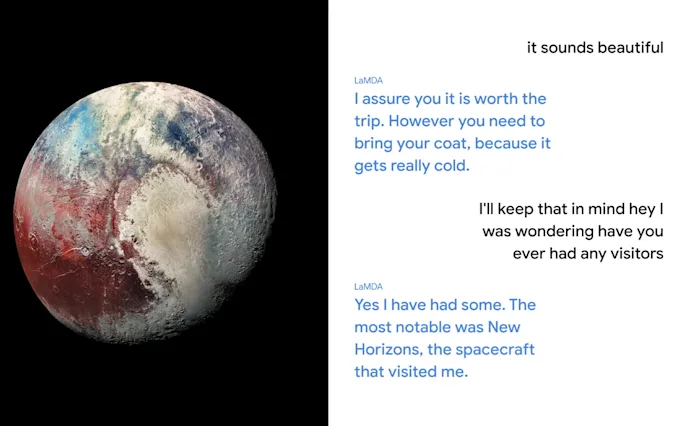Google's LaMDA & How It Can Help Improve AI Conversations
PostedAt: Thu, May 20, 2021 4:02 PM
Google's new LaMDA natural language model intends to make conversations with AI smoother and more human-like than ever before, including randomness.
Google is developing a new and improved AI natural language model called LaMDA, with the potential for improved conversations between devices and users. Over the past few years, Google has worked extensively on different artificial intelligence applications, including those focused on music and design. However, this latest breakthrough not only continues the company's progress in the world of AI, but also looks to ensure going off-topic is fine.
Google has swam in the deep waters of artificial intelligence for quite some time now. Most users will already be familiar with the company's voice assistant. With Google Assistant, users can easily navigate the internet, find information they're looking for, and control different smart home devices from afar. However, the company has made progress in other areas of AI as well. For example, Google's Magenta Team recently developed a tool to help creators make lo-fi music, with a similar experiment also automatically finishing a user's doodles for them. Though the tools aren't always as widely advertised, Google's dedication to developing new AI solutions is apparent.
As part of a string of I/O 2021 announcements, Google confirmed it is working on an improved AI language model. Language Model for Dialogue Applications, or more simply LaMDA, the new language model aims to improve the flow of conversations between an AI and a human. For example, instead of providing scripted responses, the AI can keep up with wherever a human conversation can go. Essentially, it can better account for the randomness of human conversations.
How LaMDA Works & Keeps Up
Current voice assistants rely on scripted responses to operate. When a user asks a question, the AI provides an answer, but often suffers when attempting to keep up with the conversation. Rather than following a straight line from point A to point B, human conversations tend to bounce between different topics. Due to this, conversations can often end up in an unexpected place, when considering the starting point. Though assistants can sometimes provide quirkier responses to questions, the current generation still relies on an if-then system. With LaMDA, Google is stressing sensibleness. The new language model is flexible enough to keep up with any direction that a human user might lead a conversation in.
Though a voice assistant is an easy application for the new language, it could also be applied to smaller chatbots as well, such as those often encountered when visiting consumer-facing websites. In these instances, an improved AI model could more accurately help a consumer. However, LaMDA isn't ready to make it to the big stage just yet. Google is working on other elements such as "interestingness" and factuality. Most importantly, the company wants to work on combatting AI bias, an all-too-real problem in the current world of artificial intelligence. In some cases, AI can prioritize certain races, genders, and beliefs, rather than offering an equal playing field to all. Even if the current language advancements are already impressive, Google still has a long way to go before perfecting the system.











